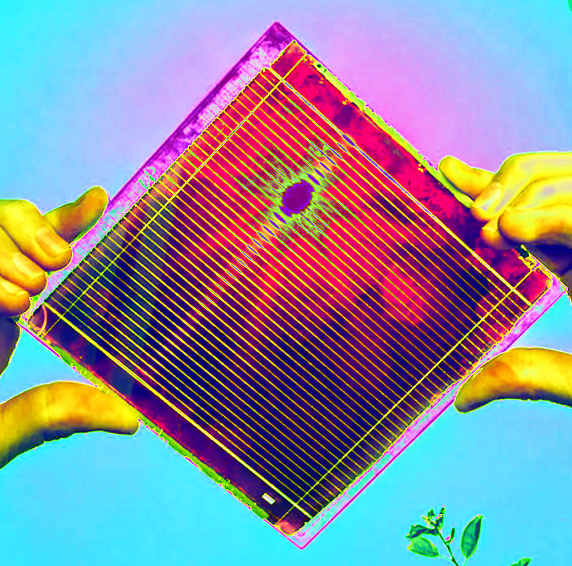Printable solar coming
 Australian engineers are working on nanoparticle ink for printing solar cells.
Australian engineers are working on nanoparticle ink for printing solar cells.
Made from tin oxide, the ink is created with just one key step at relatively low temperature using microwave technology, and without any need for further purification. It is then used in solar cells to help selectively transport electrons, which is crucial to generating electricity.
Prototype devices built with this method have recorded power-conversion efficiencies of 18 per cent, which is among the best efficiencies for a planar-structured next-gen perovskite solar cell processed at low temperatures.
The ink is suitable for making different types of perovskite solar cells, including with glass and for printing onto plastic, which can be done cheaply at high volumes. This technique, called roll-to-roll coating, is similar to the way newspapers are printed.
Within the ink product, the average size of each particle can be controlled to remain between just five and 10 nanometres. To put that in context, a sheet of paper is 100,000 nanometres thick, and your fingernails grow one nanometre every second.
Perovskite solar cells already rival the efficiency of their established silicon counterparts, and they are also more flexible and require less energy to make.
Problems with long-term durability and some hurdles in the manufacturing process have so far prevented these exciting materials from overtaking silicon.
Now, though, researchers from the ARC Centre of Excellence in Exciton Science, working with Australia’s national science agency CSIRO, may have found an answer to some of these challenges with their tin oxide nanoparticle ink.
The results of the work, which received funding from the Australian Renewable Energy Agency (ARENA), have been published in the journal Chemistry of Materials and are available here.
“Perovskite solar cells can be manufactured by industrial printing. While the process is inherently low-cost, the cost of every component still counts. This work demonstrates a great way to contribute to ultra-low-cost manufacturing of perovskite solar cells in the future,” says CSIRO principal research scientist Dr Doojin Vak.







 Print
Print